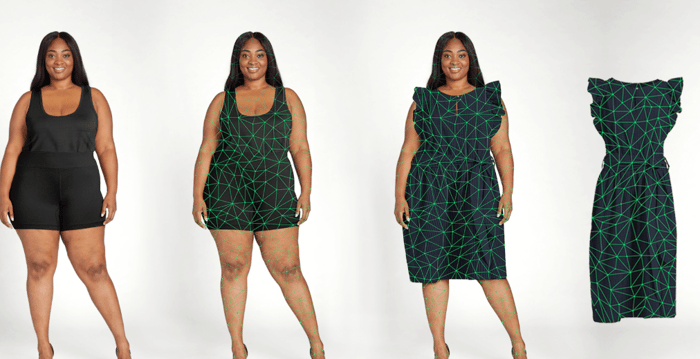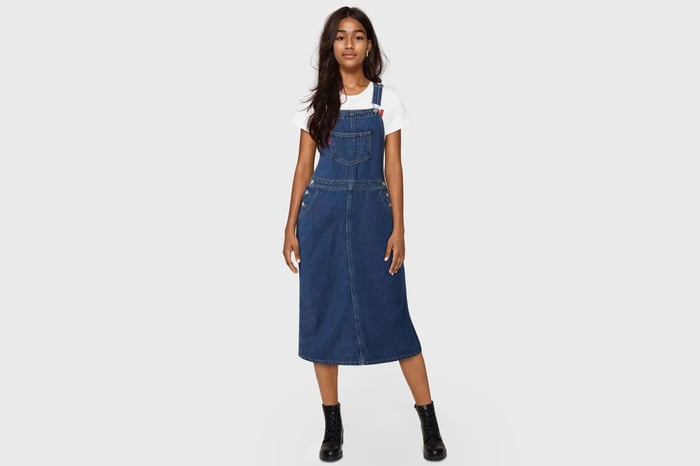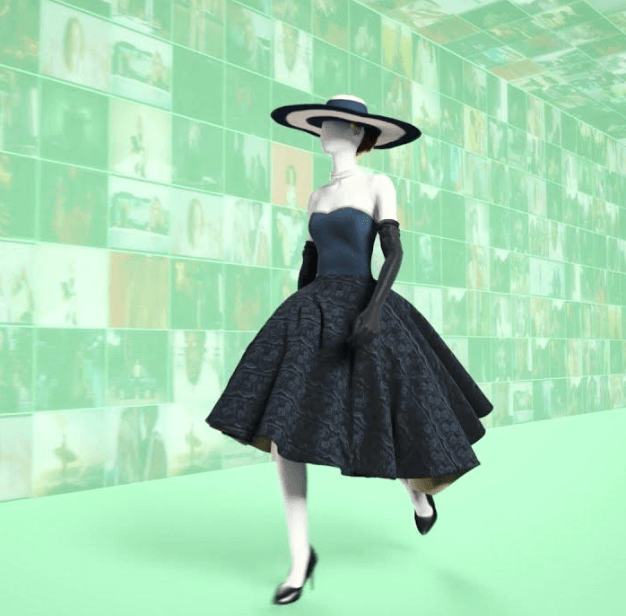Virtual Clothing Models: The Future of Fashion Design and Online Shopping
Table of Contents
It’s nothing new that technology is playing an increasingly significant role in today’s society. It continues to make its way into more aspects of everyday life, and since fashion is a key part of our daily routines and a crucial form of self-expression, it’s no surprise that technology has taken a keen interest in this discipline of appearances. With rapid technological progress and growing demand for efficiency and sustainability, brands are turning to virtual clothing models to redefine the way collections are created, showcased, and sold.
These digital figures are not only transforming fashion design but also changing how consumers shop, interact with brands, and engage with style online.
What Are Virtual Clothing Models?
Virtual clothing models are digital avatars designed to simulate real human bodies and movements and they are used to present garments in a visually compelling and accurate manner. With realistic proportions, facial features, and lifelike textures, they are capable of displaying clothes with precision, helping designers and consumers understand how garments fit, flow, and look from multiple angles.
These virtual models can be customized in terms of body shape, skin tone, posture, and expression, offering complete control over styling and presentation, flexibility that allows brands to better represent diverse audiences, promote inclusivity, and adapt visuals to various campaigns or markets without the logistical challenges of traditional photoshoots.

These virtual models occupy a crucial place in the fashion design process today, as they help designers visualize the fit of the final garment before production even begins. Through 3D software, designers can dress digital models, test how fabrics behave, and refine silhouettes long before a prototype is created. This improves efficiency and reduces the environmental impact of sample production.
Furthermore, working virtually with this type of design and modeling allows for something that in-person work doesn't: simultaneous collaboration with artists from around the world, at any time and place. Teams spread across different cities or countries can share visual prototypes, provide feedback, and adjust designs in real time and this type workflow accelerates the creative process and helps ensure that collections are both cohesive and responsive to market needs.
Perhaps the use of these virtual models for digital commerce is one of the most interesting and attention-grabbing. For years, one of the main drawbacks of online shopping has been the lack of interaction with the product, consumers often struggle to visualize how an item will look or fit on their body, leading to uncertainty and high return rates. This problem is solved with the use of these virtual fashion models because shoppers can view garments worn by digital figures with body types that resemble their own, improving confidence in purchasing decisions. Some platforms are even exploring interactive features that let users adjust the virtual model’s shape or try garments on a personalized avatar.
 This technology enhances transparency and builds trust. When customers see garments realistically presented, they are more likely to feel satisfied with their purchase. For brands, this means fewer returns, better engagement, and more loyal customers.
This technology enhances transparency and builds trust. When customers see garments realistically presented, they are more likely to feel satisfied with their purchase. For brands, this means fewer returns, better engagement, and more loyal customers.
In this way, the use of virtual models can have a great advantage in terms of the diversity that it can offer. Digital models can be created to reflect various ethnicities, body sizes, ages, and gender identities, helping brands connect with more diverse audiences. This kind of representation is not only ethical, it is also strategic. Consumers want to see themselves reflected in the brands they support, and virtual models make that easier than ever. Virtual fashion models can also shift the focus from unrealistic beauty standards toward more authentic, inclusive visuals. With the ability to create and control every detail, brands can prioritize individuality and empowerment in their visual storytelling.
Modelia: A Leader in Virtual Fashion Modeling
One company leading the way in this field is Modelia. With its intuitive platform, Modelia allows fashion brands to create professional visuals of their garments using realistic virtual models. By simply uploading a garment image, users can generate lifelike digital photos that showcase the piece from various angles.
Modelia’s approach streamlines the content creation process, saving both time and resources. It empowers small and large fashion businesses alike to compete in the digital space with high-quality visuals, while also promoting creativity and sustainable design practices. With tools like Modelia, virtual clothing models are no longer a futuristic concept, they are a practical solution for the challenges of modern fashion.

Create your own virtual model with Modelia!
The Future of Virtual Fashion Models
As the technology continues to evolve, virtual clothing models will become more advanced, interactive, and integrated into everyday shopping. We may soon see virtual fitting rooms that adapt in real time, AI personalization based on a shopper’s history, or full fashion shows featuring only digital models.
The metaverse is also opening new doors for virtual fashion. In virtual environments, avatars wear and display digital garments, creating opportunities for brands to launch exclusive digital collections. This not only adds a new revenue stream but also builds excitement and engagement with younger, tech-savvy audiences. So, this has only just begun and the new technological revolution is something that is already happening today.

3D Virtual Try-On: How Technology is Revolutionizing Online Shopping and Fashion
The world of fashion is undergoing a digital revolution, and one of the most transformative innovations is 3D Virtual Try-On technology. By combining artificial intelligence, augmented reality (AR), and 3D modeling, this technology allows shoppers to virtually “try on” clothing and accessories before making a purchase. This not only enhances the shopping experience but also bridges the gap between online and in-store retail.
What is 3D Virtual Try-On?
3D Virtual Try-On is a technology that creates realistic, interactive 3D representations of clothing and accessories on a user’s digital avatar or live image. Unlike traditional product images, this system can simulate how fabric drapes, stretches, and moves according to body shape and pose. It goes beyond static photos or 2D try-on tools by offering a more immersive, lifelike experience.
How It Works
Body Scanning or Avatar Creation: Users can create a digital avatar by inputting their measurements or using body scanning technology available on some apps.
Clothing Simulation: The 3D try-on software overlays the selected garment onto the avatar or live image, simulating fabric textures, colors, and fit.
Interaction: Users can rotate, zoom, and even move to see how the clothing looks from different angles, providing a realistic preview before purchase.
Benefits for Shoppers
Enhanced Confidence: By seeing how clothing fits and moves on their body, shoppers are less likely to return items, reducing purchase anxiety.
Personalized Experience: Shoppers can experiment with different styles, sizes, and colors virtually, creating a customized shopping journey.
Time-Saving: No need to visit multiple stores or try on numerous outfits physically, which is especially valuable in busy urban lifestyles.
Benefits for Fashion Brands
Reduced Returns: Virtual try-on technology helps consumers make better-informed decisions, leading to fewer returns and exchanges.
Data Insights: Brands gain valuable data on consumer preferences, helping optimize inventory and design choices.
Marketing and Engagement: Interactive try-on experiences can be integrated into social media, creating engaging campaigns that increase brand visibility.
Examples of 3D Virtual Try-On in Action
Some fashion brands and e-commerce platforms have already adopted this technology with impressive results:
Retail Apps: Many apps now include AR-powered try-on tools that allow users to see how shoes, dresses, or accessories look on their body in real time.
Online Stores: E-commerce sites integrate 3D try-on directly on product pages, reducing uncertainty and improving conversion rates.
Social Media Integration: Shoppable AR filters on platforms like Instagram allow users to virtually try on items while sharing their experience with friends, merging entertainment with shopping.
The Future of Fashion Shopping
3D Virtual Try-On is more than a convenience—it’s shaping the future of fashion retail. As AI and AR technologies improve, the line between physical and digital shopping experiences will continue to blur. Soon, shoppers may explore entire virtual stores, mix and match outfits in real time, and even receive AI-driven style recommendations tailored to their body type and personal taste.
For fashion brands, this means rethinking the customer journey, investing in immersive technologies, and embracing a new era where digital experiences are as important as physical ones.
Final Thoughts: Embracing the Digital Revolution
Virtual fashion models represent a major leap forward in how we design, present, and buy clothing. They combine creativity, technology, and sustainability to offer a smarter and more inclusive fashion experience. From design studios to e-commerce platforms, these digital figures are redefining the way we understand style.
As fashion continues to evolve, those who embrace these innovations will be best positioned to lead. Whether you're a designer, retailer, or consumer, virtual clothing models offer an exciting glimpse into the future of fashion a future that is already here and rapidly unfolding.
If you don't want to be left behind when it comes to technology and fashion, try Modelia for free to discover for yourself the magic of virtual models and the world of artificial intelligence applied to the world of fashion. You can also subscribe to our newsletter to continue reading articles about the latest news from AI fashion and not miss a thing!!
FAQs: Virtual clothing models
1. What are virtual clothing models?
Virtual clothing models are AI-generated or 3D-rendered representations of human models used to display apparel online. They allow fashion brands to showcase garments in realistic ways without physical photoshoots, providing flexibility in poses, sizes, and styles.
2. How are virtual clothing models created?
Virtual clothing models are created using AI and 3D modeling technology. These systems analyze body shapes, fabric drape, and movement to generate lifelike models wearing digital garments. Tools like Modelia, Botika, and Fashn.ai automate this process, making it fast and scalable for fashion e-commerce.
3. What are the benefits of using virtual models for fashion brands?
Using virtual clothing models reduces production costs, shortens time-to-market, and enables brands to create consistent visuals across collections. They also make it easier to personalize product images by changing model type, pose, background, or lighting in seconds.
4. Can virtual models replace traditional photoshoots?
In many cases, yes. Virtual clothing models can replace traditional photoshoots for online catalogs, lookbooks, or ads. They offer the same visual appeal while being more sustainable and affordable. However, some brands still combine both methods for authenticity and variety.
5. Are virtual clothing models customizable?
Absolutely. Virtual models can be customized by body type, ethnicity, pose, hairstyle, and even facial expression. Advanced AI platforms let brands match their model visuals to their target audience, maintaining brand identity and inclusivity.
6. How can fashion retailers start using virtual clothing models?
Fashion retailers can start by partnering with AI modeling platforms like Modelia, which simplifies model creation and garment visualization. After uploading product images or 3D files, the system generates realistic visuals that can be used across websites, marketplaces, and social media.
How would you rate this article:
Related Articles
- 3D Fashion Design: Revolutionizing Fashion with Cutting-Edge Technology
- AI Video Templates: How Artificial Intelligence is Streamlining Video Creation and Editing
- The Psychology of Fashion: Why Our Clothes Say More Than We Think
- How to Mirror an Image Step-by-Step
- AI Photo Restoration: Revive Old Photos with Cutting-Edge Artificial Intelligence Technology
- The Best Fashion Photographers to Follow on Instagram
- What is Google's Virtual Try-On feature?
- Top 5 AI Image Enhancers for Stunning Visual Enhancements
- The Best Outdoor Clothing Brands for Every Adventure
- How Generative AI Is Transforming E-Commerce for Brands
